
Decline and fall of the yurt
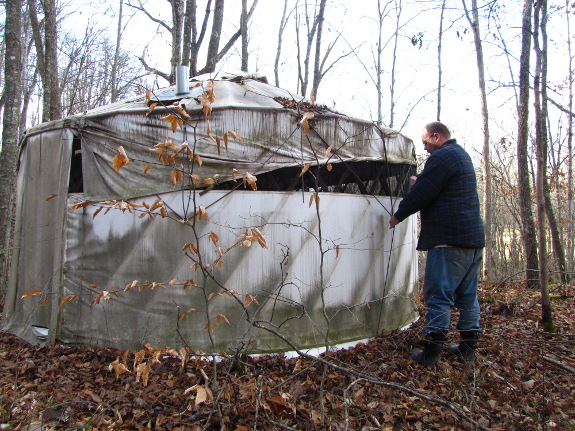
The sad day finally came
--- yurt removal time. My brother Joey bought
the yurt in 2008
when he was living in the city and pondering purchasing land. He
figured he could use it as a retreat on our property whenever he
wanted, then move it to his new land. Mark and I loved having a
visitor who was willing to retreat to his own personal space once our
socializing powers ran out, so we were thrilled when Joey added
a wood stove to made
yurt camping fun even in cold weather.
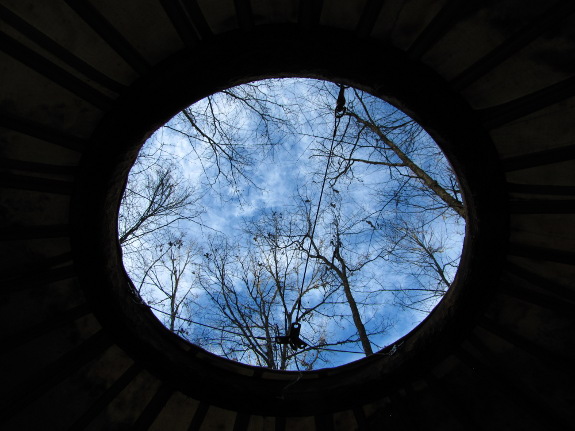
After a couple of years
of joyous yurt visits, though, Joey started renting an underground
house way out in the
country, which fulfilled his yearnings and left the yurt vacant.
We still managed to tempt him over to visit with homegrown meals, but
he returned to his cozy woodland dwelling for the nights.
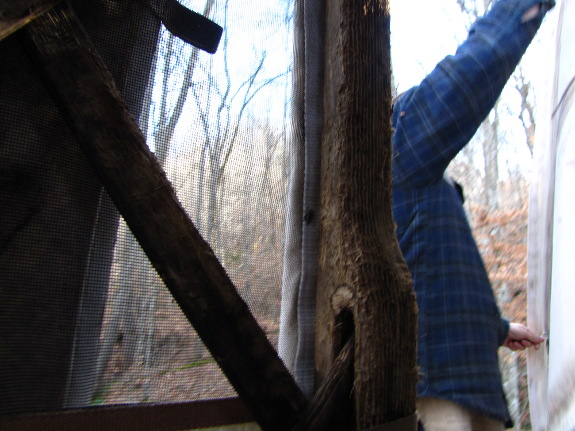
Meanwhile, weather (and
mice) were taking their toll on the yurt. This summer, the
natural canvas fabric making up the roof developed some pretty big
leaks, and the rodents began gnawing at the wooden supports. Joey
figured it was time to take the yurt down while it was still useable
(which hopefully it will be if the roof is replaced).
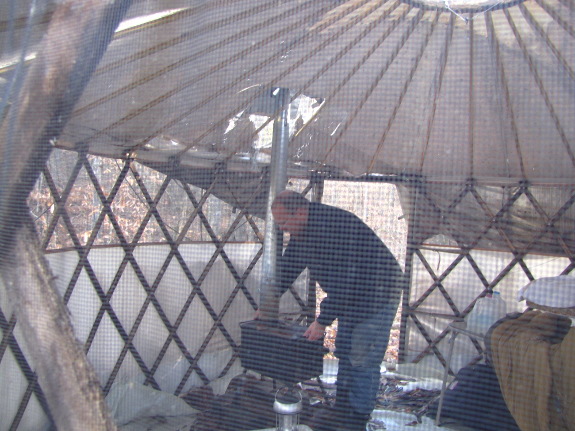
I asked Joey if he'd go
the yurt route again, and he said "Definitely!" Although the
structure wasn't cheap, we put it up in an afternoon and it served him
well for quite a few years.
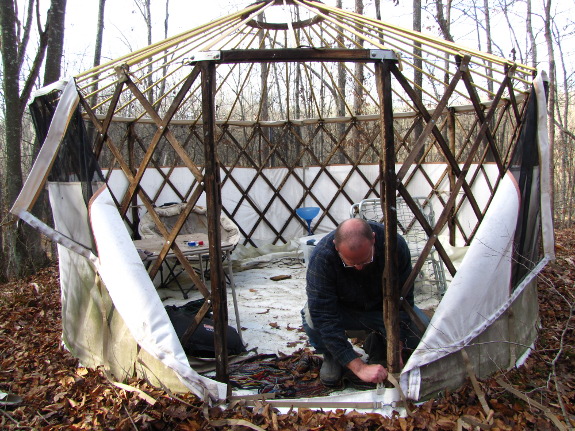
Although I'm sad to see
the yurt go, I have to admit that it didn't make the perfect guest
cottage I'd hoped for. After tromping through the mud to get to
our trailer, I never was able to talk a single guest (except Joey) into
walking another city block through the woods (no mud, though!) to enjoy
our yurt accomodations. Instead, our nearby
intentional community
seems to be the perfect spot to house visitors, complete with modern
conveniences.
Farewell, sweet
yurt! May you rise again elsewhere soon.
Want more in-depth information? Browse through our books.
Or explore more posts by date or by subject.
About us: Anna Hess and Mark Hamilton spent over a decade living self-sufficiently in the mountains of Virginia before moving north to start over from scratch in the foothills of Ohio. They've experimented with permaculture, no-till gardening, trailersteading, home-based microbusinesses and much more, writing about their adventures in both blogs and books.
Want to be notified when new comments are posted on this page? Click on the RSS button after you add a comment to subscribe to the comment feed, or simply check the box beside "email replies to me" while writing your comment.

A roof that is starting to fail after only four years doesn't sound very good.
Maybe it would have lasted longer with more maintenance?
Hmm, I would expect a real canvas (i.e. hemp) fabric to last longer. Therefore I suspect this is cotton.
You might try coating the cotton material with a drying oil (e.g. linseed oil) to make it more water-resistant. But from the moss growing on the walls I'd suspect that you'd also need a kind of biocide to keep it from rotting. Maybe adding a fine copper podwer to the linseed oil would be a reasonable alternative. The linseed oil wound bind the copper and prevent it from washing out.
But for long-term use in a relatively wet environment, I'd guess that a good quality Dacron sailcloth would much last longer, especially when properly coated to protect it against UV radiation. Look into the materials for aircraft fabric covering if you're interested.